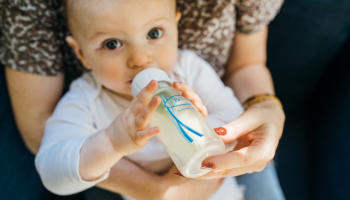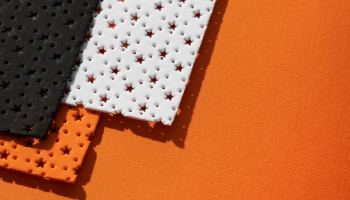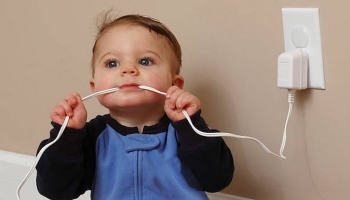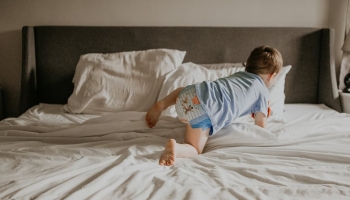Imagine a scenario where you’re holding a wailing, hungry baby in your arms, desperately trying to pacify their hunger pangs. But let’s face it; when babies demand food, they want it pronto! They won’t sit idly by while you leisurely warm up a bottle, right?
Some babies are perfectly fine with a cold milk bottle, but most want it warmed correctly. Warm your baby’s milk using a bottle warmer or heating pad. You can also keep warm water in a thermal flask. When you use a bottle warmer or put a bottle in hot warm, you can use the wrist method to check for the perfect temperature. You should also gently swirl the content so it is evenly warm. There are other ways to warm your baby’s bottle.
This article will explore the following topics:
- Why warm a baby’s bottle?
- The basics of bottle warming,
- Safety tips on warming a baby’s bottle
- The different methods to warm a baby bottle
How to warm a baby bottle: Different safe methods explained
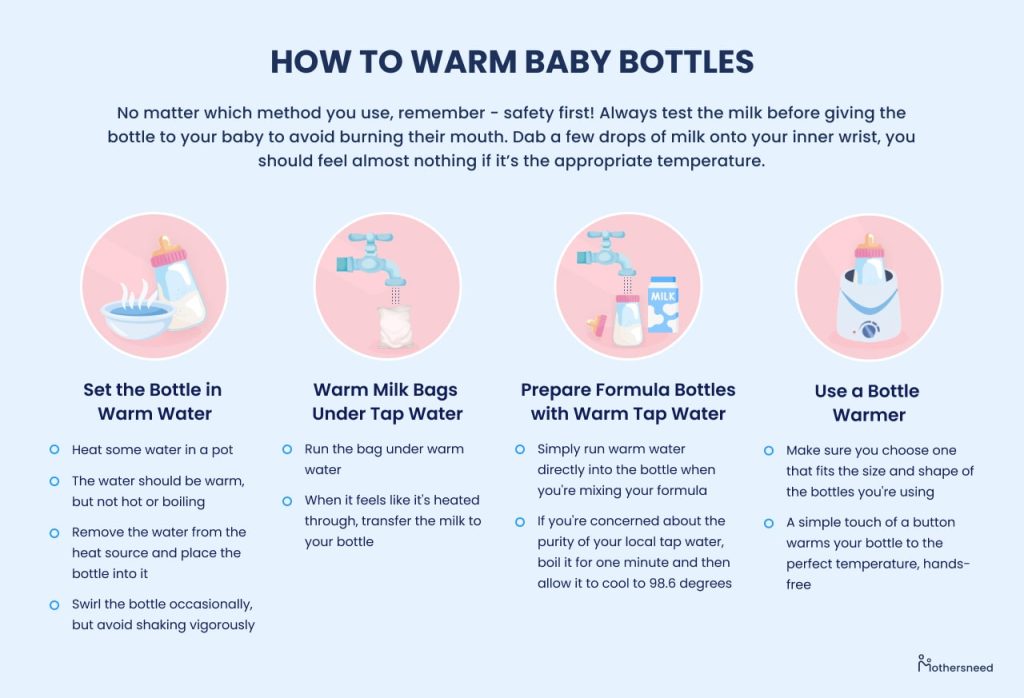
There are several safe and effective ways to warm bottles, each with unique advantages. You can put the bottle in a container of warm water, run it under the warm-water tap, prepare the baby’s formula with warm water, or use a bottle warmer.
Let’s explore these different methods one after the other:
1. Warming a bottle in a container of water
Heat enough water to fill a container that will hold your bottle at least up to the neck. You can do this with a pot on the stove or a bowl in the microwave, after which you must remove the water from the heat source to let it cool off briefly before putting in your cold bottle of formula. You want the water to be about the temperature you’d use if you were washing your hands thoroughly. In other words, you want it to be warm, bordering on hot, not clearly hot, and certainly not boiling.
After placing formula bottles in the container of warm water, the next step is to wait for the bottles to warm up. How long the “waiting” process will take depends on the type of bottle you’re using. But generally, 10-15 minutes is a reasonable guideline. You might want to try practicing when your baby’s not hungry. You don’t have to waste formula; just try heating plain water.
Guidelines for warming expressed breast milk
Breast milk can be served at room temperature or cold and does not necessarily require warming. However, if you choose to warm it, follow these guidelines:
- Keep the container sealed.
- Submerge the sealed container in a bowl of warm water or hold it under warm, not hot, running water for a few minutes.
- Always test the milk’s temperature before feeding by placing a few drops on your wrist.
- Avoid warming breast milk directly on the stove or in the microwave.
- Swirl the breast milk to mix the fat if it has separated.
- If there is any leftover milk after feeding, use it within 2 hours. Discard any remaining breast milk beyond this timeframe.
WARNING: Don’t put your baby bottle in boiling water to warm it. Having a bottle in boiling water can lead to scalding and pose a risk to the baby’s mouth and throat. Do not heat formula or breast milk directly in the microwave or stove.
2. Warming a bottle with the hot water tap
You can warm baby bottles just by running them under the hot tap, but there’s not much to say about this option. First of all, it uses a lot of water, and secondly, it requires you to stand there for the length of time it takes to warm the bottle, which is usually 10-15 minutes. That’s 10-15 minutes you could have spent doing something else, like changing your baby’s nappy. It takes less time to warm up milk bags, usually about 5 minutes or thereabouts, but even so, that’s 5 minutes you could have used for something else.
3. Make your formula with warmed water
Heat your pure and safe drinking water to a lukewarm temperature, then use it to make up the baby formula. In theory, you can do this just with the tap. In practice, there are two potential issues.
Firstly, many areas of the US (over 85%) have limescale. If you have a water softener, this may solve that problem, but this is not guaranteed. Secondly, even if you have soft water, you may find that the water temperature changes. This could result in you accidentally overheating your milk.
Another option would be to heat some water, put it in a thermos, and leave it. Then, when you’re ready to make up your formula, add cold, safe drinking water and then top it up with water from the thermos to make warm milk (or at least to get the milk up to room temperature). Always put in the cold water before the hot to reduce the risk of overheating the milk.
It may take a bit of practice to get the correct ratio; again, you can do this with plain water while your baby’s otherwise occupied.
NOTE: Always use safe and pure drinking water for your baby. When abroad, use boiled bottled water that is still above 70˚C for preparing the formula. Avoid using tap water. Be cautious with bottled water labeled as ‘natural mineral water’ as it may contain excessive sodium or sulfate for babies. Ensure the label indicates the following:
- Sodium (Na) content is less than 200 milligrams (mg) per liter.
- Sulfate (SO or SO4) content is less than 250 milligrams (mg) per liter.
4. Use a baby bottle warmer
A bottle warmer may seem like an extravagance, given that, technically, you don’t need to heat the milk at all, not even for newborns. On the other hand, babies up to 6 months generally have a strong preference for heated milk, and keeping them (and their fragile stomachs) happy generally makes life more comfortable for everyone.
If you are going to buy a bottle warmer, make sure it will fit all the bottles you intend to use. Many bottle warmers will fit a variety of baby bottles. But if you buy one from a baby bottle manufacturer, it may be designed to work just with their own brand of baby bottles.
Before you go to bed, pour in hot water. Check the water temperature before you mix the formula. It should not be too hot or too cold.
5. Improvised bottle warmers
If you can’t justify buying a proper bottle warmer, consider getting a very small slow cooker and leaving it on continually. Then when your bottle warming time is past, you can just use it as a slow cooker (or pass it on to someone else).
6. Warm milk on the go
You can buy a portable bottle warmer for use on the move. If you’re interested in this option, remember to think about what you will do for power. If you only have a standard 12VDC car adapter, you’ll only be able to use it in a car. If, however, you have a USB adapter, then you can use a power bank. If you can use batteries as well, then you have even more options for providing your baby with a warm meal.
Where portable bottle warmers are unavailable, you can go down the old-fashioned route of just portioning out your formula before leaving. When your baby is ready to eat, add cold (lukewarm) water to mix and then warm it up with water from a thermos.
7. Use a kettle
Since you can’t leave a bottle warmer on all night because it can catch fire when the water dries, the safer option will be to use a kettle that keeps the water at a constant temperature. So when the baby wakes up, the water will be at the perfect temperature to mix with the formula.
8. Use a thermos/thermal flask
A thermal flask can save you from buying a baby bottle warmer specific for bottles, except if you want to warm a bottle on the go. Like you do when using a bottle warmer, you just fill it with hot water before bed.
9. Use a heating pad
You can see a heating pad on the lowest setting and wrap it around the formula or frozen breast milk bottle. Keep it a bit open so it doesn’t get too hot. It works better for heating breast milk than formula.
10. Use a formula dispensing machine
A formula dispensing machine will mix and dispense the formula when you press a button. The dispenser keeps the water warm, some for up to 24 hours. You can set the formula concentration, volume, and temperature. It is easy to use.
Why warm a baby’s bottle?
The natural temperature of breast milk is about 37C. When your baby is a newborn (0 to 6 months), it’s best to ensure that any formula feeding or expressed milk they receive is served at the ideal temperature (or close to it). This makes life easier for their fragile stomachs and for their parents.
Once a baby is past this stage, they will develop new ideas about the perfect temperature for their milk. Many will still prefer warm milk but will take it at room temperature. Some babies prefer cool milk, especially in hot weather. However, you have to warm frozen breast milk.
The Centers for Disease Control and Prevention (CDC) says formula does not need to be warmed before you feed it to your babies. Some experts recommend you give newborns and younger babies warm milk because warmed milk is easier to digest, and your baby will not need extra energy to heat it in their belly.
Breast milk is naturally at body temperature, and that’s warm, so your baby may prefer pumped milk or formula to have the same temperature. Warming formula may be suitable for babies to avoid tummy aches.
The basics of warming a baby’s bottle
If you think that warming a bottle for a baby is essentially the same as making a warm drink for an adult, then you’re partly right and partly wrong. You’re right in the sense that babies often prefer warm drinks for much the same reasons that adults do, i.e. they’re comforting, especially when it’s cooler.
You’re wrong because the average cup of tea or coffee is served around 70C to 80C. In other words, an adult’s idea of warmth is about twice the temperature of breast milk. If you try serving your baby their milk at this kind of temperature, you’ll not only scald their insides but also destroy a lot of the nutritional value of the milk.
In other words, really, you’re not so much warming the baby’s bottle as just taking the edge off the cold. If your baby’s milk is at the right temperature, you should be able to sprinkle a few drops of it on your wrist or elbow and not really notice it (because it’s so close to your body’s own temperature).
Safety tips on warming a baby’s bottle
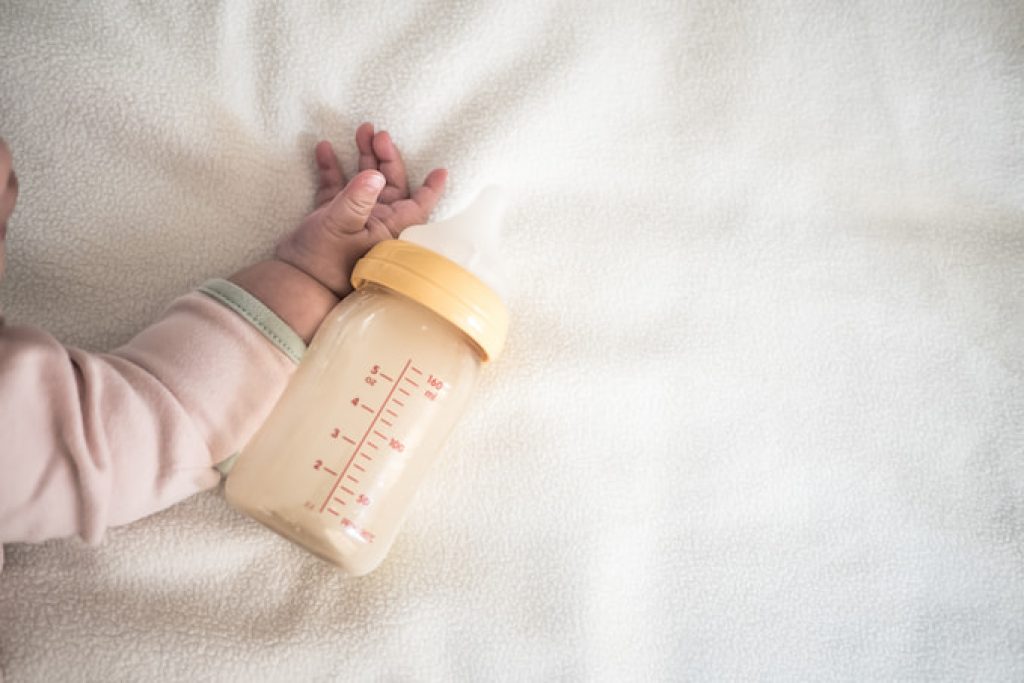
Warming a baby’s bottle can be a delicate process, but with the right approach, you can ensure a safe and comfortable feeding experience for your little one. Here are some essential tips on warming a baby’s bottle:
Never warm baby bottles in the microwave
It’s just way too easy to overheat the bottle. Sometimes, microwaves fail to heat things evenly. Even though you can leave the milk to cool before you serve it to your baby, you cannot restore the precious nutrients lost by overheating. You can rarely achieve the desired temperature with a microwave.
Moreover, microwaving bottles can create hot spots, making the milk or formula unevenly heated and posing a risk of scalding your baby’s mouth. It’s best to steer clear of this method altogether.
You can keep a bottle of formula warm for up to an hour or two
If you’re trying to anticipate your baby’s feeding times, you may get it wrong occasionally and have the bottle ready before they want it. But then, you’ll be fine if you use it up within an hour or two. After that, it has to go down the sink. Frozen breast milk must be used within 24 hours of thawing it. You can also keep freshly pumped milk at room temperature for up to four hours and up to four days in the refrigerator.
NOTE:
- Use prepared infant formula within 2 hours after preparation and within one hour after you start feeding the baby.
- If you don’t start using the prepared infant formula within 2 hours, please store the bottle in the fridge and use it within 24 hours.
Never reuse baby milk once it’s been warmed
While it’s important to eliminate food waste, it’s even more important to avoid giving your baby food poisoning. This means that once baby milk has been warmed, you have an hour to use it. If your baby doesn’t finish it, too bad, it goes down the sink.
Always test the water temperature before you feed your baby
Whatever bottle-warming method you use, always double-check the temperature of the milk before you feed your baby. Give the breast milk bottle a good swirl (don’t shake it) to ensure it is properly mixed and the temperature is even throughout the bottle. Then push out a few drops onto your hand, wrist, or elbow. The milk or formula should feel comfortably warm, not hot. Avoid using the baby’s lips or tongue to check the temperature, as they are less sensitive than your skin.
Keep it clean
Ensure that the bottle, nipples, and any accessories used for feeding are thoroughly cleaned and sterilized before use. This prevents contamination and keeps your baby healthy.
Opt for Glass or BPA-Free Bottles
Consider glass or BPA-free baby bottles to avoid chemical leaching and potential health issues. All plastic bottles sold in the U.S. are now BPA-free, but if unsure about older or secondhand bottles, heat milk or formula in a glass container before transferring it to your existing bottles to eliminate concerns.
Warming a bottle at night
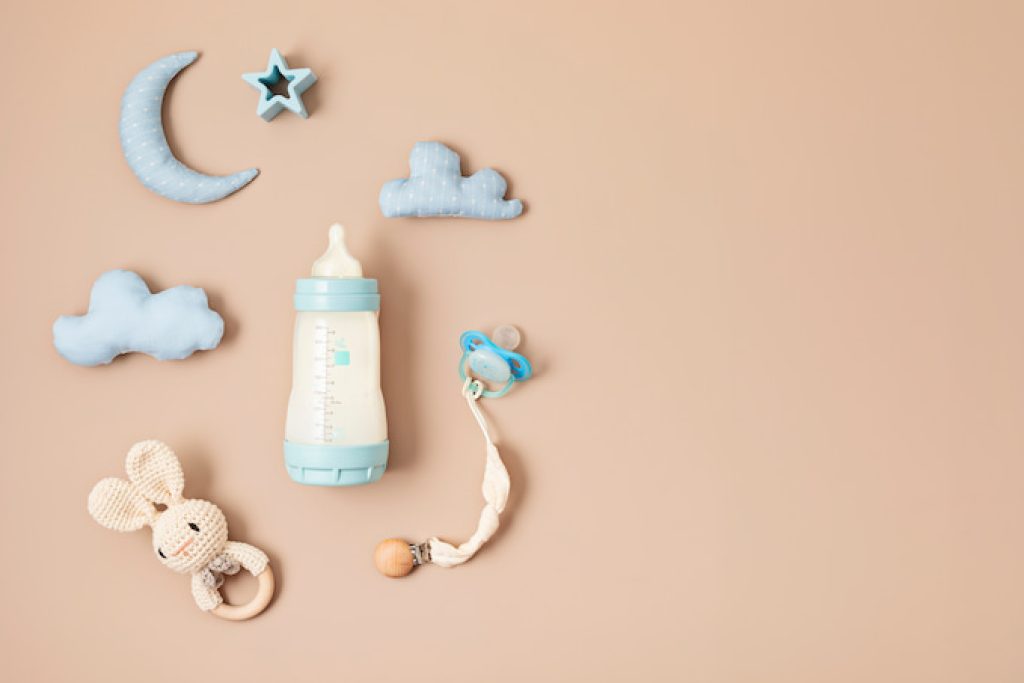
During the day, there’s probably a decent fighting chance that you can anticipate when your baby will likely want to be fed. At the very least, you’ll have the opportunity to pick up on the early-warning signs that their stomach is starting to grumble. This allows you to get the nipple into their mouth before they turn into a hunger-fueled monster.
At night, however, you’ll likely be woken up by your baby letting you know they want to be fed NOW. It can therefore be a smart move to invest in some reusable breast milk pouches even if you’re only using formula. This is a smart move because breast milk bags have a very large surface area, so they warm very quickly. Then you just pour the milk into a regular baby bottle and start feeding.
Pro tip: If it’s a long trip to your kitchen, save yourself some time by storing what you’ll need for your night-time feed(s) in your baby’s nursery. You can put your ready-made feed(s) into a cool bag with freezer packs and keep hot water in a thermos. You’ll also need a bowl to hold the water when you want to warm the feed and, of course, a bottle. You might also want a funnel to make transferring the milk from the bag to the bottle easier.
Frequently Asked Questions
What is the best way to warm a baby bottle?
The best way to warm a bottle is any method that doesn’t lead to overheating or uneven heating. For instance, using a warm water bath, warm faucet water, or a bottle warmer is safe and effective in warming the bottle to a comfortable temperature for your baby (usually the body temperature).
How do you warm up a bottle of formula?
To warm a bottle of formula, place it in a bowl with warm tap water for up to 15 minutes. Avoid using the microwave directly on the milk to prevent uneven heating or scalding. Always test the temperature on your wrist before feeding.
Can you warm a bottle and then put it back in the fridge?
It is generally not recommended to warm up a bottle and then put it back in the fridge. Once formula or breast milk is warmed to a suitable feeding temperature, it should be used within 2 hours after preparation and within one hour after you start feeding the baby. After this time, any leftover milk should be discarded, as it may have been exposed to bacteria.
How long can a warm bottle sit out?
A warm bottle of formula or breast milk can sit out at room temperature for a limited time before it should be discarded. The general guideline is to use the warmed bottle within 2 hours after preparation.
How to keep baby bottle warm at night?
This depends on the method you choose to warm your baby’s bottle. A simple way to warm breast milk or formula is to put the bottle in warm water for 15 minutes; it should not be more than that. Swirl the bottle gently to make sure all the milk is evenly warmed. Do not shake it vigorously so you don’t introduce air bubbles. Air bubbles can cause tummy aches.
Can you leave a bottle in a bottle warmer overnight?
You should not leave a bottle warmer on all night. They don’t come with an auto switch-off button, so it can cause a fire hazard when the water dries out.



